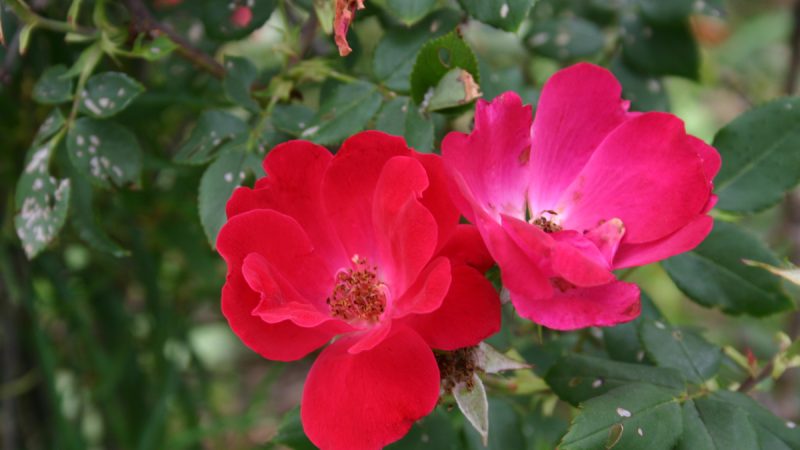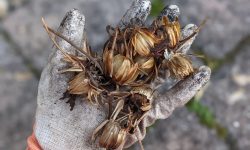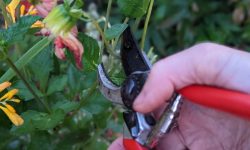Knockout roses rank as one of the most favored and dependable rose types for residential gardens. Known for their vigorous growth, disease resistance, and abundant blooms, these roses provide a splash of color from spring through fall with minimal effort. However, even these hardy roses benefit significantly from one key gardening practice: deadheading. Deadheading knockout roses is essential to maintaining continuous flower production, improving plant health, and keeping the shrub looking its best.
Deadheading is the process of removing spent or faded flowers from the plant. While it may seem like a simple task, deadheading knockout roses correctly and consistently can make a huge difference in the number of blooms you enjoy throughout the growing season. When old flowers remain on the plant, the rose directs its energy toward seed production instead of new bud formation. By removing these spent blooms promptly, you encourage the rose to produce more flowers, prolong the blooming period, and reduce disease risk.
This comprehensive guide will cover everything you need to know about deadheading knockout roses—from the benefits of deadheading and timing, to the tools and techniques you should use. Whether you are a novice gardener or a rose enthusiast, mastering deadheading will help you maximize your knockout rose’s beauty and performance.
Why Deadheading Is Crucial for Knockout Roses

Knockout roses are bred for resilience and continuous blooming, but they still follow the natural life cycle of flowering plants. After a rose flower fades, the plant’s biological instinct is to produce seeds. Once a flower starts to develop seed hips, the plant reduces or stops producing new buds. This shift causes the blooming to slow down or cease until the next growth cycle.
Deadheading interrupts this seed-setting process. By cutting off spent blooms before they can form hips, you signal the rose bush to focus its energy on producing more flowers rather than seeds. This hormonal cue encourages the plant to create new flowering stems and buds, thus extending the blooming season.
In addition to promoting flower production, deadheading also helps prevent disease. Old, decaying flowers can harbor fungal spores and bacteria, creating an environment where diseases like black spot and powdery mildew can thrive. By removing spent blooms, you reduce this risk and keep your knockout roses healthier.
Finally, deadheading improves the overall appearance of the plant. Dead flowers can make even a healthy rose bush look neglected or untidy. Removing them regularly keeps the shrub looking fresh, vibrant, and well-maintained, enhancing your garden’s curb appeal.
When to Deadhead Knockout Roses
Knowing the right time to deadhead your knockout roses is essential for maximizing flower production. You should begin deadheading as soon as you notice that the blooms are fading or wilting. Typically, a knockout rose flower lasts about one to two weeks before it begins to fade, although this can vary based on weather conditions and plant health.
The signs that a rose needs deadheading include petals turning brown or dull, petals falling off, and the flower head shrinking or developing hips (seed pods). It is best to deadhead before the hips fully develop, as this is when the plant commits its energy to seed formation.
Deadheading should be done consistently throughout the blooming season, which for knockout roses often spans from late spring to the first frost in fall. Inspect your plants weekly or more frequently during hot weather, when blooms may fade faster.
Regular deadheading keeps the rose in a constant state of flowering. If you let the spent blooms remain for too long, the rose may reduce new flower production, resulting in fewer blooms as the season progresses.
How to Deadhead Knockout Roses Properly
Deadheading knockout roses involves more than just snapping off the old flower heads. Proper technique ensures that you encourage healthy new growth without damaging the plant.
First, identify the spent flower. This is a bloom that is wilted, faded, or beginning to form seed hips. Using clean, sharp pruning shears or scissors, make a cut on the stem just above the first set of five healthy leaves below the spent bloom. This leaf set is known as a leaf node.
Cutting above this leaf node is crucial because it encourages new shoots and flower buds to develop from this point. Avoid cutting too far down the stem, which can stress the plant and slow growth. Also, avoid cutting too close to the spent bloom to prevent leaving a stub that may rot.
Make clean cuts to prevent crushing the stem, which can open the plant to infections. Always sterilize your pruning tools before and after use to minimize the spread of diseases.
If the spent bloom is easily removed by hand and the stem is soft, you can gently pinch the flower off with your fingers. However, pruning shears are recommended for thicker stems or to make precise cuts.
Tools for Deadheading Knockout Roses
Using the right tools makes deadheading knockout roses easier, safer, and more effective. The primary tool you will need is a pair of sharp bypass pruning shears. Bypass pruners make clean, scissor-like cuts that minimize damage to plant tissue, promoting faster healing and reducing the risk of disease.
A pair of gloves is essential to protect your hands from thorns. Knockout roses are generally thornless or have fewer thorns than traditional roses, but some varieties still have prickles that can scratch your skin.
Disinfecting your pruning tools is a critical practice to prevent transmitting diseases from one plant to another. Use rubbing alcohol or a diluted bleach solution to wipe the blades before and after pruning.
Having a small container or bag nearby to collect the removed flowers helps keep your garden tidy and prevents fungal spores from spreading through decaying plant matter.
Supporting Deadheading with Proper Rose Care
Deadheading is most effective when combined with good overall care for your knockout roses. These roses prefer full sun—at least six hours of direct sunlight daily—to produce the most flowers. Ensuring your plants get ample light will enhance the benefits of deadheading.
Water your roses deeply but infrequently, aiming for moist but well-drained soil. Avoid wetting the foliage to reduce the risk of fungal diseases. Mulching around the base helps conserve moisture and keeps roots cool.
Feeding your knockout roses with a balanced fertilizer encourages healthy growth and prolific blooming. Use a fertilizer formulated for roses or a general-purpose fertilizer with micronutrients. Apply fertilizer according to package instructions, typically every six to eight weeks during the growing season.
Regularly monitor your plants for pests like aphids, spider mites, and Japanese beetles. Treat infestations promptly with insecticidal soap or horticultural oil to maintain plant health and support continued flowering.
Common Deadheading Challenges and Solutions
While deadheading knockout roses is generally straightforward, some gardeners encounter challenges. One common issue is accidentally removing healthy buds or new shoots while trying to remove spent blooms. To avoid this, take your time and closely examine the plant before cutting.
Another challenge is dealing with tough or woody stems that are hard to cut. Using sharp bypass pruners designed for thicker stems can help. If you encounter resistance, avoid forcing the tool to prevent injury to yourself or damage to the plant.
Sometimes, despite deadheading, a knockout rose may produce fewer flowers. This can be due to environmental stress such as drought, poor soil, or insufficient sunlight. In such cases, reevaluate your care routine and adjust watering, feeding, and light exposure as needed.
Disease can also affect blooming. If black spot or powdery mildew is present, treat promptly with fungicides and remove infected foliage. Keeping the plant healthy through proper cultural practices will improve deadheading results.
Additional Tips for Extending Blooming Periods
Besides regular deadheading, there are other practices to help extend the flowering period of your knockout roses. Pinching back leggy growth in early spring can encourage bushier plants with more flower buds.
Pruning knockout roses in late winter or early spring before new growth begins shapes the shrub and stimulates vigorous flowering. Follow recommended pruning guidelines specific to knockout roses for best results.
Keeping your garden clean by removing fallen leaves and debris reduces disease risk and promotes a healthier environment for your roses.
Incorporating companion plants that attract pollinators and beneficial insects can improve flower quality and plant health.
FAQs About How to Deadhead Knockout Roses
How often should I deadhead knockout roses?
Aim to deadhead at least once a week during the blooming season to keep the rose producing new flowers continuously.
Can I deadhead knockout roses by hand?
Yes, for soft, young stems, you can pinch off spent flowers with your fingers, but pruning shears provide cleaner cuts for thicker stems.
Does deadheading prevent disease?
While deadheading reduces decaying plant matter that can harbor diseases, proper sanitation and cultural care are also necessary to prevent fungal infections.
When is the best time of day to deadhead?
Deadhead in the morning when plants are dry to minimize disease risk and make cleaner cuts.
Can deadheading extend the blooming season?
Yes, consistent deadheading encourages new bud formation and prolongs the flowering period.






